The Shrimp Net: The Misunderstood Net of World War II
Date Written: March 20, 2016
Author: Josh Kerner
Editors: Tom Kelly, Charles McFarlane
During World War II the US Army Corps of Engineers, as camouflage has historically been their domain, procured a variety of helmet nets for US forces from American, British, and Commonwealth sources. The main types of helmet nets, include:
1/2” “Normandy Style” Helmet Net 1/4” “British Style” Helmet Net
“79th Division Style” Net “M1944” Net, Helmet, with Band, (Caption)
Shrimp Net, representative example, (Caption) Shrimp Net, 3rd Infantry Division version The above list is by no means exhaustive. It is merely intended to show the great variance in styles of netting used by different units, even within the same theater of operations. An in depth analysis of each style net, its procurement, and use, will hopefully be the source of greater analysis and future scholarship. This article will focus on only one type - the “Shrimp Net”.
The illustrations provided below are to clear any confusion between the 1/4 inch "British Style" netting which was knotted, and the M44 and shrimp nets which were woven. There are distinct features in construction and shape to each of these types of nets making them identifyable upon close examination of photos.
Section No.1: The ‘M44 Net’:
Officially there was no “M44 Net”. What many reenactors and collectors call “M44 Net” is actually “Net, Helmet, with Band.” “Net, Helmet, with Band” was a late war U.S. Army-developed standard helmet net.(1) It was made from a woven camouflage net, included a foliage band tied on to the rear of the net , and was affixed with an instruction card explaining configurations in which the net could be worn. These nets seem to first appear in use by troops in the ETO during the late Fall of 1944 and become progressively more common until the end of the war in Europe.
While the woven nature of the “Net, Helmet, with Band” is similar to the “Shrimp Net”, they are two different nets that come from two very different sources.
(1) Reynosa, Mark A. The M-1 Helmet: A History of the U.S. M-1 Helmet in World War II. Atglen, PA: Schiffer Pub., 1996, 78-79.
Section No.2: The Camouflage Factories:
One of the keys to understanding the story of the Shrimp Net is understanding the “Camouflage Factories” that produced a large number of them. The Camouflage Factories of the U.S. armies were institutions run by the Army’s Engineers with the purpose of procuring and producing camouflage for the Army from large camouflage nets for covering supply dumps to helmet nets.(2)
Each field army, for example the 1st, 3rd, 5th, 7th, & 9th armies, each had a camouflage factory. These local Camouflage Factories were supplemented by additional Camouflage Factories in the Communication Zone. (3)
(2) Report No.18: Camouflage Activities June 1942-May 1945 by US Army Corps of Engineers, Pg. 96(3) Ibid, 98
Section No.3: British Supply
It was originally planned that vast majority of camouflage items would be procured from the British.(4)However, in early 1944 it was realized that this would be impossible because the British lacked the industrial capacity to meet the Army’s need.(5) In fact, British manufacturers were only supplying about 40% of what the Army needed, and were 3-6 months behind the Army’s schedule of procurement.(6)
Thus, American planners were forced to look to alternative sources of netting to to make up for this deficit.
(4) Ibid, 94(5) Ibid.(6) Ibid.
Section No.4: Why Shrimp Nets?
To begin with, what is a “Shrimp Net”? According to FM 5-20H Camouflage Materials and Manufacturing Techniques dated July of 1944:
The issue small-mesh net is shrimp net, which is a closely woven cotton fabric with mess of from 1/4 to 5/16 inch square.(46)
In short a shrimp net, as defined by the Army Corps of Engineers, is a ~1/4” woven net.
These nets were initially intended as larger nets for use in concealment of equipment. As such the US Shipped 140,300 Large “Camouflage nets, shrimp” overseas to be used as such.(7)
(7)Ibid, 87Why were Shrimp Nets cut up and used as helmet nets? To quote Report No.18: Camouflage Activities June 1942-May 1945:
“Shrimp nets increased rather than decreased the obviousness of the equipment beneath them when they were employed in foliage bearing terrain, since they lack the required texture. They become too shiny under the mud and dust of field conditions, and when seen from the air a shrimp net was the most conspicuous object in the region.”(8)
(8) Ibid, 101Simply put, they were ineffective as large area covering nets. The use of shrimp nets as camouflage for vehicles and large emplacements was soon ordered to be curtailed in the ETO.(9)
(9) Ibid, 102This netting provided ample stock of material to repurpose into helmet nets, and or lack of constructive uses for the shrimp netting the Army even tried painting the nets white and using them as snow camouflage, without success. The salvaging on these nets into helmet nets was not merely intended as a means of conservation of material, but also served the US Army Corps of Engineers goal of equipping units in the field with helmet netting.(10)
(10)Ibid, 92 & 103
Section No.5: The Numbers
Unfortunately, the numbers we have are incomplete and, in at least one case, ambiguous. Our research attempts to formulate reasonable assumptions based on the limited information available.
Our analysis begins with an examination of the number of “Shrimp Nets” procured from the British. In Report No.18: Camouflage Activities June 1942-May 1945 there is a listing of camouflage supplies the British supplied to the Americans in what would become the 12th Army Group. It states that from March to July of 1944 1,700,000 “Net, camouflage, steel helmet, M-1, cotton shrimp” were procured from British sources, and that additional 10,000 were procured from the British by December.(11)(11) Ibid, 94Thus, by the end of 1944 at least 1,710,000 Shrimp Nets, total, were provided to the US by the British. However, that number is imprecise because the document does not list in detail any other sort of nets being provided during this period, and appears to classify all types of helmet netting provided by the British as “shrimp nets”. Given the thoroughness of the rest of the document, the ambiguity of the reference may explained a number of ways, including:
- The number of other style nets provided were so insignificant that they were not recorded;
- After March of 1944, the only nets the British gave the Americans were “Shrimp Nets” with the other styles being among the 500,000 given prior to March of 1944 and mentioned in this document;
- All helmet nets were described as shrimp nets; and/or
- The British didn’t actually supply other styles of helmet nets.*
*The author of this piece believes that some of 1/2” “Normandy” Nets might actually be an American procured helmet nets and that the 1/4” “British Style” Net and the Shrimp Net were so similar that they recorded as the same line item. However the author understands that further research is needed to prove this working theory.
The second step is an analysis of the number of “Shrimp Nets” produced in the camouflage factories.
The Communication Zone Camouflage Factory for the ETO was not in operation until October 1st, 1944.(12) The start of production dates for the various factories of the field Armies are not provided, however given the situation in theatre a good assumption for earliest date of a Field Army having the facilities to produce shrimp nets is the Fall of 1944.
(12) Ibid, 96Unfortunately, Report No.18: Camouflage Activities June 1942-May 1945 only provides numbers for the Communication Zone Factories and the 9th Army Factory. The European Theater of Operations Communication Zone Factories produced 234,767 helmet nets by the end of the war. The 9th Army Factory produced 116,875 helmet nets.(13)
(13) For Communization Zone Factories “Shrimp Net” Production see pg. 97, for 9th Army Factory Production see pg. 99That gives us an absolute minimum of 351,642 Camouflage Factory produced Helmet Nets “Shrimp Net” Material. However we do know that the 1st, 3rd, & 7th also had camouflage factories.(14)
If we assume that each one was as efficient as the 9th Army Factory, that gives us roughly 702,000 camouflage factory produced shrimp nets.
Thus, from these sources we can reasonably estimate the total number of these nets produced from these sources to be:
- 1,710,000 British Produced “Shrimp Nets”
- 351,642-702,000 American Camouflage Factory Produced “Shrimp Nets”How do these numbers fit in with the total number of Camouflage Helmet Nets in Theatre? The Report No.18: Camouflage Activities June 1942-May 1945 provides the following totals of helmet nets in the European Theater of Operations:
-Total Helmet Nets from the USA: 1,123,200
- Total Nets from the UK: 2,200,000(of these 1,710,000, elsewhere in the document, are described as shrimp nets) *
- Total Nets still in Depots: 690,000
- Total Nets Issued: 2,633,200(15)(14) Ibid, 98-99(15) All these numbers come from the chart on pg. 87 of ETO Report No.18: Camouflage Activities June 1942-May 1945.
*This number is different than the earlier number as the earlier number only concerned British Shrimp Nets procured after March of 1944. This number, presumably, covers the whole war. Hence the 500,000 net differenceNoticeably absent from the table above is a total for theatre produced helmet nets.
However, we know from other sections of the report that the Camouflage Factories in the theater produced approximately 702,000 shrimp nets. Therefore, if we assume theater produced “Shrimp Nets” are a separate line item, it means that there are 4,025,200 maximum possible helmet nets in theatre.
About 17.4% of that number are American Camouflage Factory produced “Shrimp Nets” of which, based off of the information in the document, we can say with an extremely high degree of probability were all woven “Shrimp Nets”. That 17.4% is the bare minimum number of “Shrimp Nets” in theatre.
Moreover, 42.5% of the total number of helmet nets in theater are described as “Shrimp Nets” provided by the British, however, that number may be inflated due to the fact British produced ¼ inch knotted nets may be included in the total.
Therefore, it is possible that up to 60% of all nets in theatre were of the Shrimp Net type, but that number may vary depending on how many of the 1,710,000 nets procured from British sources were knotted nets. Further research at archives in the United Kingdom would be needed to figure out the true breakdown.
Section No.6: Photos of Use
Section No.7: Conclusion
This style of net is seldom seen among reenactors although up to 60% of all nets in theatre were of a “shrimp net” type or style (or at the very least, 17.4% were if we go with the lowest possible number). The shrimp net is seen in a number of units within the armies in the ETO beginning in the fall of 1944, and becomes more common in photographs from the late Winter and Spring of 1945.
However, more research of the Engineer Corp records is required in order to identify differences in the weave of American vs British/Commonwealth nets, and to ascertain if each Camouflage Factory cut their nets differently or followed a standard pattern. This additional research would provide the basis for establishing possibly trends in the issuance of particular styles of shrimp nets during certain time periods and/or to certain units.
The shrimp net is an item that helps to give a “late war” look to the proper impression. However, we recommend doing unit specific research to see if these nets show up in original photographs or film of the unit you reenact and, if so, when and in what quantity.
United States. US Army Corps of Engineers. European Theatre of Operations. Report No.18: Camouflage Activities June 1942-May 1945. Liaison Section, Intelligence Division,
Office of the Chief Engineer, August, 1945. https://www.fold3.com/image/1/291566769.
90th IDPG Original Research



0.jpg)
0.jpg)
0.jpg)
 - Copy0.jpg)
0.jpg)
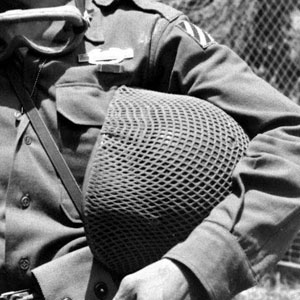
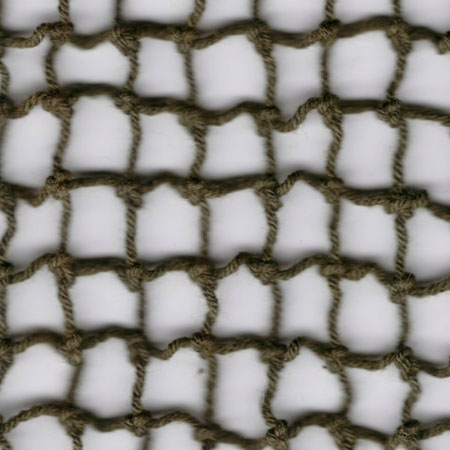
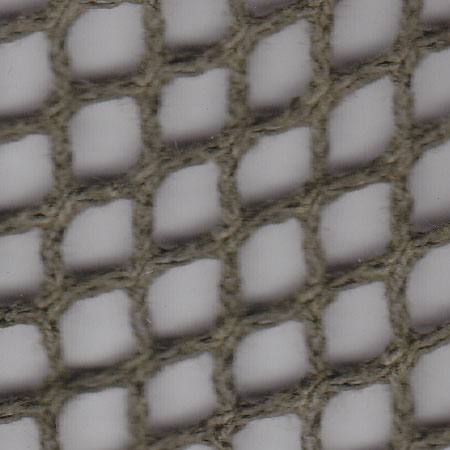
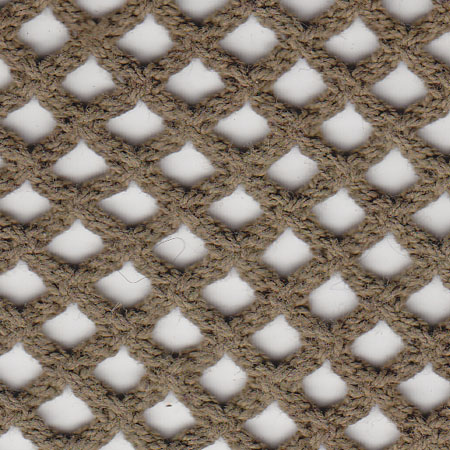
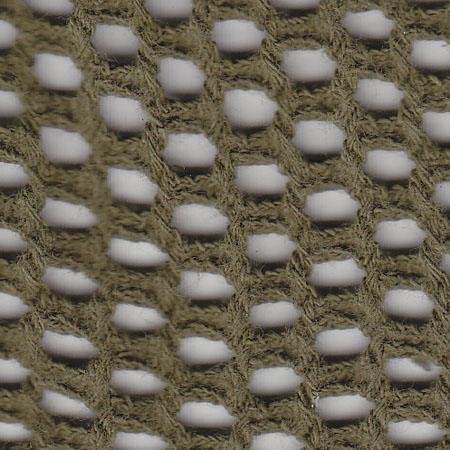

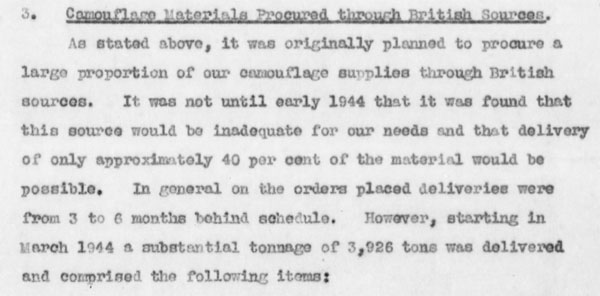


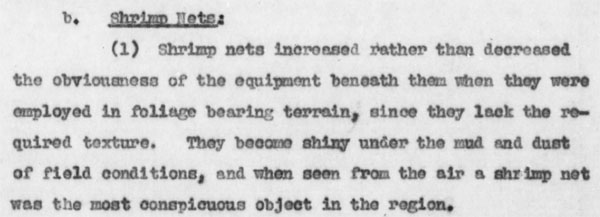

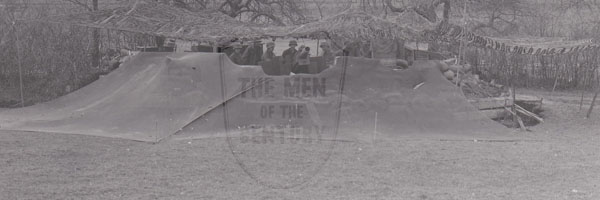
 marked0 sm.jpg)
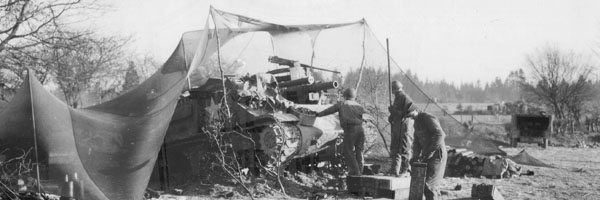

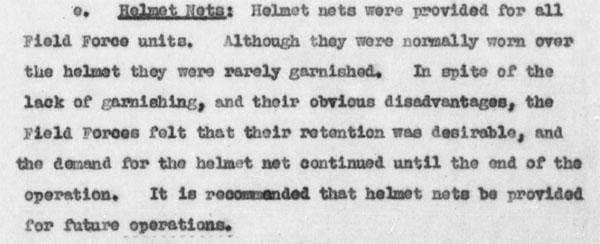

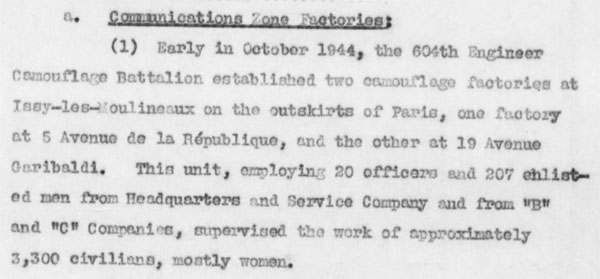

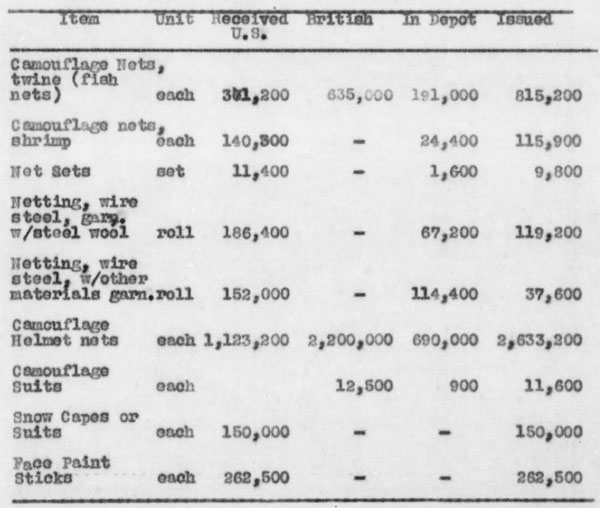
0.jpg)
0.jpg)
0.jpg)
0.jpg)
0.jpg)
0.jpg)
0.jpg)
0.jpg)
0.jpg)
0.jpg)
0.jpg)
0.jpg)
0.jpg)
0.jpg)